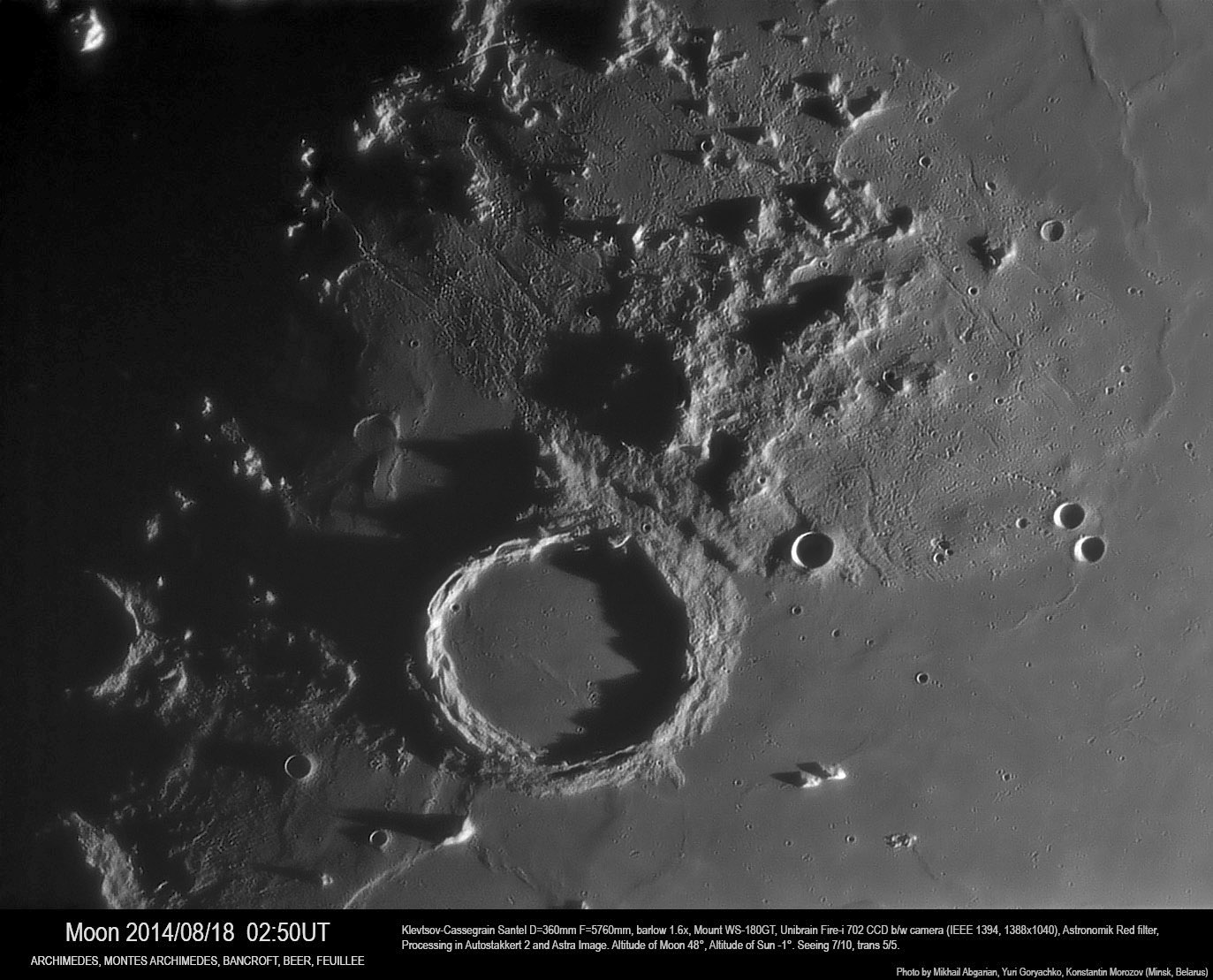Difference between revisions of "August 23, 2014"
| Line 1: | Line 1: | ||
__NOTOC__ | __NOTOC__ | ||
=Abf And Other Stuff= | =Abf And Other Stuff= | ||
| − | |||
<!-- ws:start:WikiTextHeadingRule:0:<h1> --> | <!-- ws:start:WikiTextHeadingRule:0:<h1> --> | ||
<!-- ws:start:WikiTextLocalImageRule:6:<img src="/file/view/LPOD-Aug23-14.jpg/519360294/LPOD-Aug23-14.jpg" alt="" title="" /> -->[[File:LPOD-Aug23-14.jpg|LPOD-Aug23-14.jpg]]<!-- ws:end:WikiTextLocalImageRule:6 --><br /> | <!-- ws:start:WikiTextLocalImageRule:6:<img src="/file/view/LPOD-Aug23-14.jpg/519360294/LPOD-Aug23-14.jpg" alt="" title="" /> -->[[File:LPOD-Aug23-14.jpg|LPOD-Aug23-14.jpg]]<!-- ws:end:WikiTextLocalImageRule:6 --><br /> | ||
| − | <em>south up image by Mikhail Abgarian, [mailto://astronominsk@gmail.com// Yuri Goryachko], and Konstantin Morozov, Minsk, Belarus</em><br /> | + | <em>south up image by Mikhail Abgarian, [mailto://astronominsk@gmail.com//" rel="nofollow Yuri Goryachko], and Konstantin Morozov, Minsk, Belarus</em><br /> |
<br /> | <br /> | ||
| − | Ho hum, just another outstanding LPOD image from the Minsk Miracle Imagers. They have a new telescope now that, in their hands, creates a work of art, with dramatic lighting, excellent composition and great tonality. Scientifically its pretty interesting, too. With grazing illumination all the small bumps and hills are revealed, where not hidden by black spires of shadows. The floor of Archimedes is not featureless as it often appears, but peppered with craters less than about 2 km in diameter. To the right is the flooded edge of the nearly circular exposure of the [http://apollo.sese.asu.edu/LIW/20080219.html Apennine Bench Formation], older, non-mare basalts enriched in KREEP (potassium K, rare-earth elements REE, and phosphorous P). The ABF is complex, with ejecta from Archimedes roughening its surface, which is cut by a family of mostly narrow rilles vaguely radial to the center of Imbrium. The Archimedes Mountains are old hills that curve slightly toward the center of the Imbrium Basin - are they a collapsed part of the Apennine Mountains, or remnants of a large old crater, or parts of an inner ring of the basin? I am surprised that the upper (southwest) end of the Archimedes Mountains doesn't gradually lower, with peaks sticking through Mare Imbrium. The mountains seem to be part of the ABF, not just accidentally associated with it. Explore more of this great image.<br /> | + | Ho hum, just another outstanding LPOD image from the Minsk Miracle Imagers. They have a new telescope now that, in their hands, creates a work of art, with dramatic lighting, excellent composition and great tonality. Scientifically its pretty interesting, too. With grazing illumination all the small bumps and hills are revealed, where not hidden by black spires of shadows. The floor of Archimedes is not featureless as it often appears, but peppered with craters less than about 2 km in diameter. To the right is the flooded edge of the nearly circular exposure of the [http://apollo.sese.asu.edu/LIW/20080219.html" rel="nofollow Apennine Bench Formation], older, non-mare basalts enriched in KREEP (potassium K, rare-earth elements REE, and phosphorous P). The ABF is complex, with ejecta from Archimedes roughening its surface, which is cut by a family of mostly narrow rilles vaguely radial to the center of Imbrium. The Archimedes Mountains are old hills that curve slightly toward the center of the Imbrium Basin - are they a collapsed part of the Apennine Mountains, or remnants of a large old crater, or parts of an inner ring of the basin? I am surprised that the upper (southwest) end of the Archimedes Mountains doesn't gradually lower, with peaks sticking through Mare Imbrium. The mountains seem to be part of the ABF, not just accidentally associated with it. Explore more of this great image.<br /> |
<br /> | <br /> | ||
| − | <em>[mailto:tychocrater@yahoo.com Chuck Wood]</em><br /> | + | <em>[mailto:tychocrater@yahoo.com" rel="nofollow Chuck Wood]</em><br /> |
<br /> | <br /> | ||
<strong>Related Links</strong><br /> | <strong>Related Links</strong><br /> | ||
Revision as of 22:03, 4 January 2015
Abf And Other Stuff

south up image by Mikhail Abgarian, " rel="nofollow Yuri Goryachko, and Konstantin Morozov, Minsk, Belarus
Ho hum, just another outstanding LPOD image from the Minsk Miracle Imagers. They have a new telescope now that, in their hands, creates a work of art, with dramatic lighting, excellent composition and great tonality. Scientifically its pretty interesting, too. With grazing illumination all the small bumps and hills are revealed, where not hidden by black spires of shadows. The floor of Archimedes is not featureless as it often appears, but peppered with craters less than about 2 km in diameter. To the right is the flooded edge of the nearly circular exposure of the " rel="nofollow Apennine Bench Formation, older, non-mare basalts enriched in KREEP (potassium K, rare-earth elements REE, and phosphorous P). The ABF is complex, with ejecta from Archimedes roughening its surface, which is cut by a family of mostly narrow rilles vaguely radial to the center of Imbrium. The Archimedes Mountains are old hills that curve slightly toward the center of the Imbrium Basin - are they a collapsed part of the Apennine Mountains, or remnants of a large old crater, or parts of an inner ring of the basin? I am surprised that the upper (southwest) end of the Archimedes Mountains doesn't gradually lower, with peaks sticking through Mare Imbrium. The mountains seem to be part of the ABF, not just accidentally associated with it. Explore more of this great image.
" rel="nofollow Chuck Wood
Related Links
21st Century Atlas charts 11 & 18.



